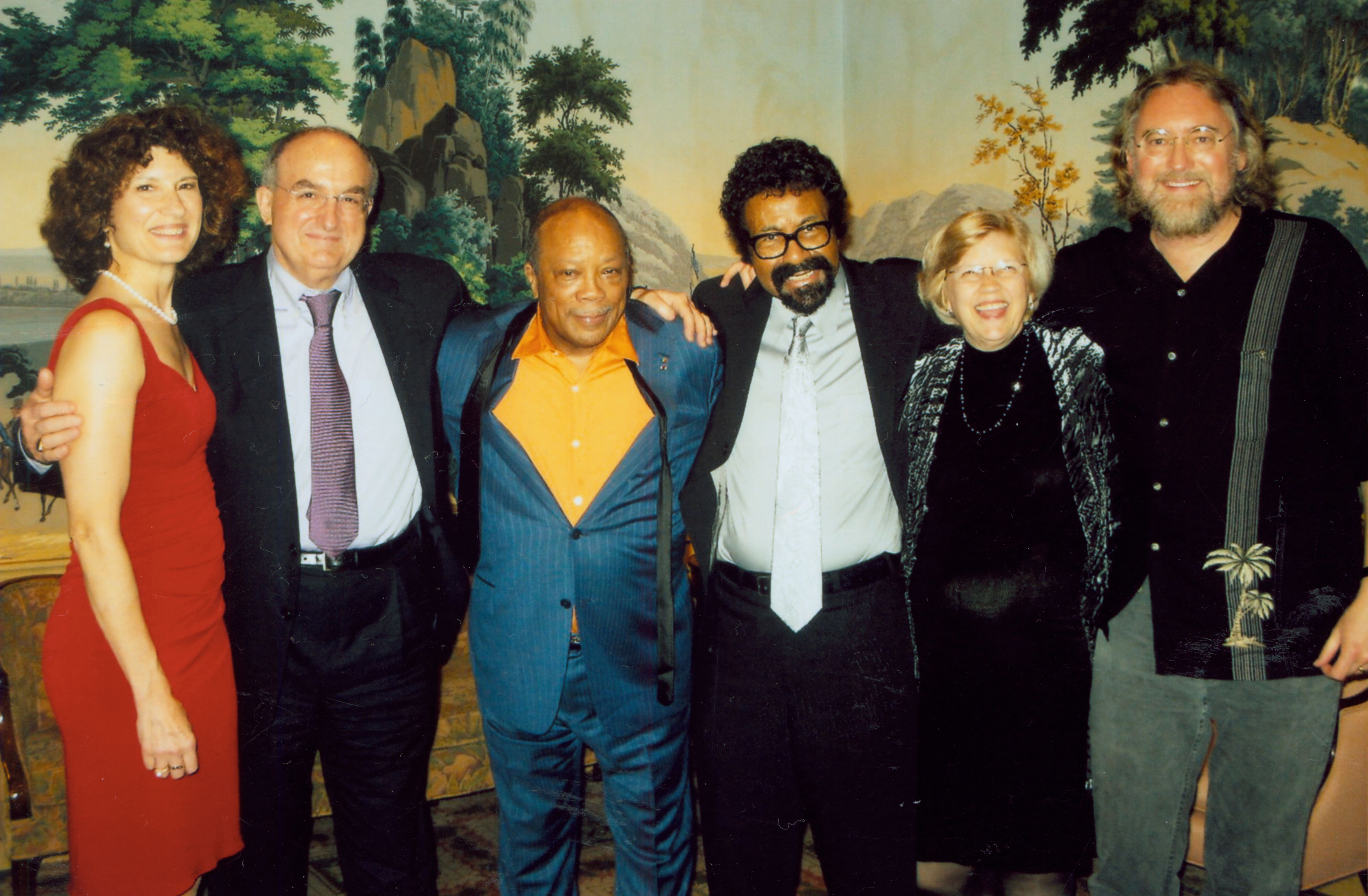Toast
It is my great pleasure to welcome you all to this evening of celebration in honor of our very distinguished guest and honorary degree recipient, Quincy Jones.
Quincy is the all-time most nominated Grammy artist (with 79 nominations), an enormously successful business executive, and a great humanitarian, and Indiana University is very privileged to have our own musical connection to Quincy through his long collaborative relationship with Distinguished Professor of Music David Baker.
Would you please join me in raising your glasses to one of the most accomplished, admired, and innovative musical artists of our time: Quincy Jones?
Thank you very much. We will have more formal remarks after dinner.
Please enjoy your meal.
Welcome and Acknowledgements
Thank you all for coming this evening. I am delighted that so many distinguished guests could join us this evening. Would you please help me welcome our Indiana University Trustees?
And would you also help me welcome Distinguished Professor of Music David Baker and his wife Lida?
Would you also help me welcome Professor of Music Glenn Gass and his wife Julie?
Life as a Technicolor Dream
Near the end of his autobiography, Quincy Jones quoted the Spanish poet and philosopher Federico García Lorca, “Life is like a dream.”
Quincy added that his life had “been in Technicolor, with full Dolby sound through THX amplification.”1 This statement captures Quincy Jones’ virtuosity as a composer, artist, record, film, and TV producer, arranger, conductor, instrumentalist, business executive, and educator. Quincy’s creative genius has traversed virtually every medium, and over the past half century, he has touched the lives of people all around the world with his incredible musicianship, his commitment to the arts, and his legendary humanitarianism.
A Musical Innovator
Quincy Jones—known simply as “Q” to fans around the world—was born not far from here, on Chicago’s south side in 1933, but grew up in Seattle. There he honed his
musical skills, ultimately taking to the clubs of Seattle’s red-light district where he met and began playing with a young, soulful pianist named Ray Charles.
At 18, Quincy earned a scholarship to the Berklee College of Music in Boston, but before he could graduate the legendary Lionel Hampton asked him to go on the road with his band.
Ultimately Quincy expanded his repertoire to include the business side of music, becoming vice president of Mercury Records, the first African-American to hold such a position at major record label, and going on to found his own recording label, a media group, and a broadcasting company.
Throughout his career, Jones has worked with artists ranging from Count Basie to Ice T, from Duke Ellington to Indianapolis-native Babyface, from Sarah Vaughn and Frank Sinatra to Bono.
Many in the younger generation know Quincy for his remarkable work on Michael Jackson’s landmark albums Off the Wall, Thriller, and Bad, but many of us here, the older generation, are more familiar with his historic musical collaboration with the supreme genius of jazz, Miles Davis.
That 1991 partnership grew out of Davis’ legendary recording sessions with the great arranger and conductor Gil Evans in the late 1950s and early ‘60s. These produced three historic recordings: Miles Ahead (1957), Porgy and Bess (1958), and Sketches of Spain (1959/60). Davis was always a protean musical figure, always improvising and turning to new material and revolutionizing jazz each time he did so. Just compare Birth of the Cool (1949) with Jack Johnson (1970).
For years, he refused to revisit this early work with Gil Evans, but after a long hiatus from making music and much urging from Quincy, Davis agreed to perform those early classics at the 1991 Montreux Jazz Festival. Gil Evans was dead by then, so there was
only one person who could possibly conduct and arrange these masterworks, and that was Quincy Jones
The result was the last recording Miles would ever release in his lifetime, arguably one of the best live jazz albums ever produced, and my all-time personal favorite jazz album, the magnificent Miles & Quincy Live at Montreux. Sadly, Miles died a few months later.
With 27 Grammy Awards, 33 film scores, and hundreds of other credits to his name, Quincy has also been committed to fostering an appreciation of African-American music and culture. He founded the Black Arts Festival in Chicago and the Institute for Black American Music, which supported the establishment of a national library of African-American art and music. He is also the founder of the Quincy Jones Listen Up Foundation, a nonprofit organization that connects youths with technology, education, culture, and music.
Here at IU, and through his connections with Distinguished Professor David Baker, our jazz students have benefited from Quincy’s mentorship and generous contributions of original arrangements—at no cost, and for that we are most grateful.
For his musical contributions to society, Quincy has already received the Grammy Living Legend Award, the Kennedy Center Honors Award, the Distinguished Arts and Letters Award from the French Ministry of Culture, and a Horatio Alger Award, among many other prestigious honors.
Of course, these awards only begin to suggest Quincy’s musical achievements, which are inextricably tied to his legacy as a humanitarian.


